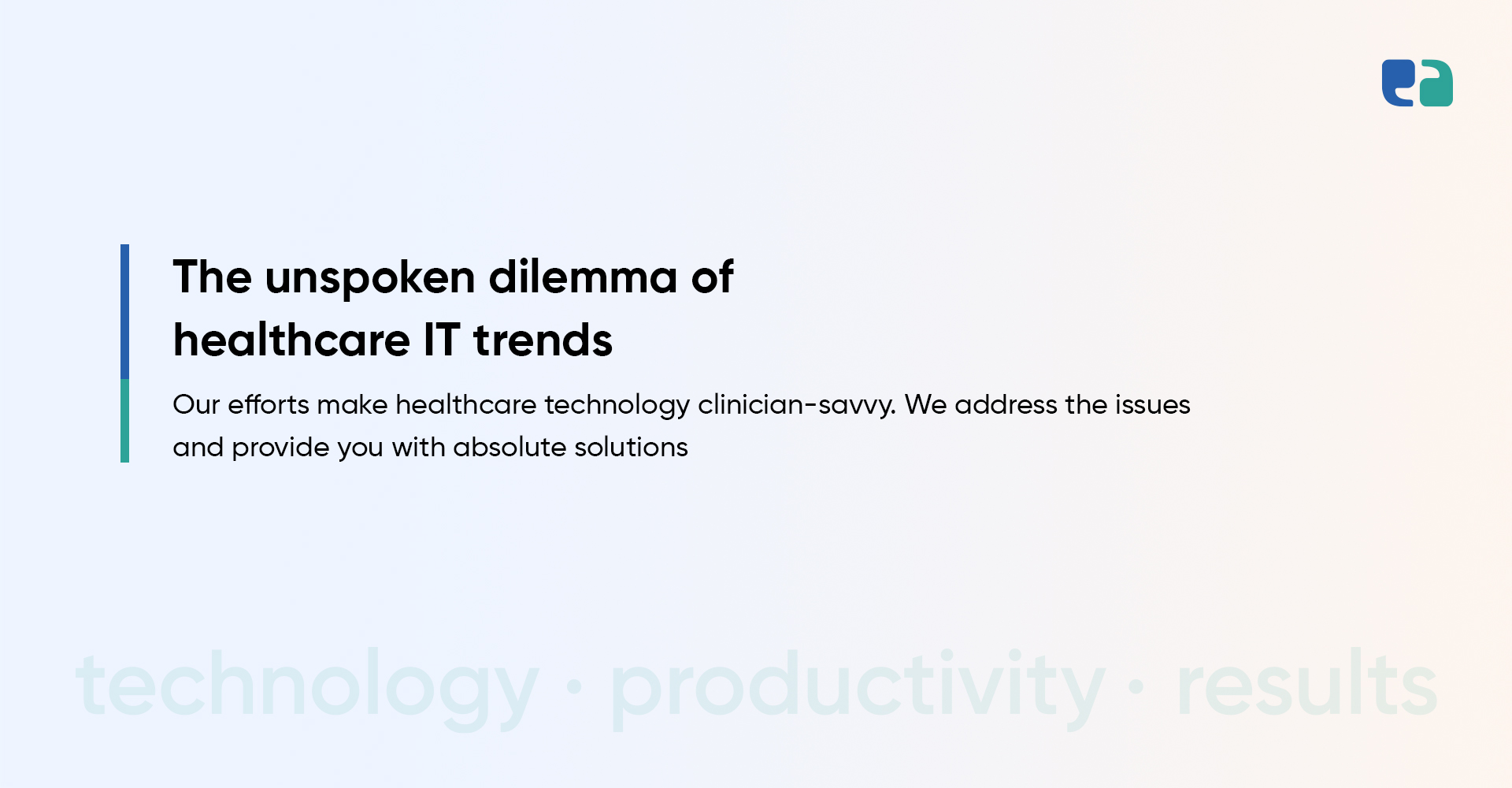Quick Summary – The title of today’s blog can be a little startling. But don’t worry we as a healthcare IT company always have solutions. Because that’s what we are experts at. So, let’s move forward and let me brief you on why doctors aren’t excited about the upcoming healthcare technology trends? And how we can make it med-savvy for them to develop a liking for it. Only catering to the healthcare-specific sector, we are hell-bent on solving it.
Technology has existed since the birth and evolution of humankind. From the invention of the first wheel to the first human flight.
Technology has always pushed through every dimension and conventional mindset and has brought significant change in our lifestyles.
Especially healthcare technologies. Among many medical transformations over the past century, healthcare technology trends have been in the spotlight increasing the two major factors acceptance and growth.
One can say, healthcare technology trends in 2021 are benchmarks achieved after experimentation. Otherwise, there would be no apparent advancement and just genealogy of equality would wait.
Consumers/ Patients are getting technology savvy but the doctors or your local clinician and physicians aren’t excited about these upcoming healthcare technology trends due to several reasons.
Thus, we at SyS Creations always try our best to provide such solutions for healthcare technology that can be savored by both classes. And that’s what we are going to do today.
Top engrossing healthcare technology trends – Innovations that created undeniable ramifications
The host of new and evolving machines and technology assisting in the medical field is healthcare technology. Trends in healthcare technology have been mobilizing outcomes, accessibility, affordability, and quality to help run the healthcare industry at a smooth pace.
So, let’s take a look at these healthcare technology trends and why doctors aren’t so amplified on using them. And, finally, we would solve the mystery. Don’t worry!
1. Telemedicine
Let me start with a number $186.5 billion. That’s how much market growth is projected for the telehealth industry.
Using technology to diagnose a patient from a remote location using video conferencing, messenger apps with stills captured and shared with medical professionals.
In 2019, telehealth and its demand surged by almost 50%. In an emergency, telehealth can remotely monitor and treat a large number of patients.
Telehealth is very efficient in terms of saving both the physician’s and the patients’ time and stress. Doctors may electronically follow up with patients, reducing the stress of last-minute visits.

2. Artificial Intelligence
The trend in healthcare technology that is transforming the healthcare sector rapidly and globally is the use of AI and ML. The market is projected to grow up to $988.8 million by 2022.
There is little question that artificial intelligence (AI) will dominate future healthcare trends. It has increased diagnostic precision through automated workforce assistance, clinical operation optimization, quantitative imaging, and other means. AI is specially designed to mimic human cognitive processes.
3. Internet of Things (IoT)
Any hardware device that shares data with you and you can control it with an internet connection. The industry is set to grow $6.2 trillion by 2025.
Different gadgets and versatile apps have come to play a basic part in following and avoiding chronic illnesses for numerous patients and their specialists.
By combining IoT advancement with telemedicine and telehealth innovations, a modern Web of Therapeutic Things Internet of Medical Things (IoMT) has risen as a healthcare technology trend.
This approach incorporates the utilization of several wearables, counting ECG, EKG screens, and In Vitro Diagnostics(IVDs) devices.
4. Cloud Computing
As we know, data and maintaining health records are a big part of the healthcare system.
With digitization on the peak, cloud computing has become the next best thing for the healthcare industry to rely on for the management of Electronic Medical Records & Electronic Health Records (EMR/EHR).
It assists in maintaining patients’ medical history, lab results, demographics, and diagnosis in a digitized format. This provides remote accessibility and better collaboration for patients and healthcare providers.

5. Virtual and Augmented Reality
The healthcare market in virtual reality is expected to reach $5.1 billion by 2025. The technology uses real-life simulations to create a conducive environment in a stationary position.
With a lot of potential to help the healthcare industry, VR and AR have advanced significantly. It has helped people with pain management, autism assistance, and depression.





